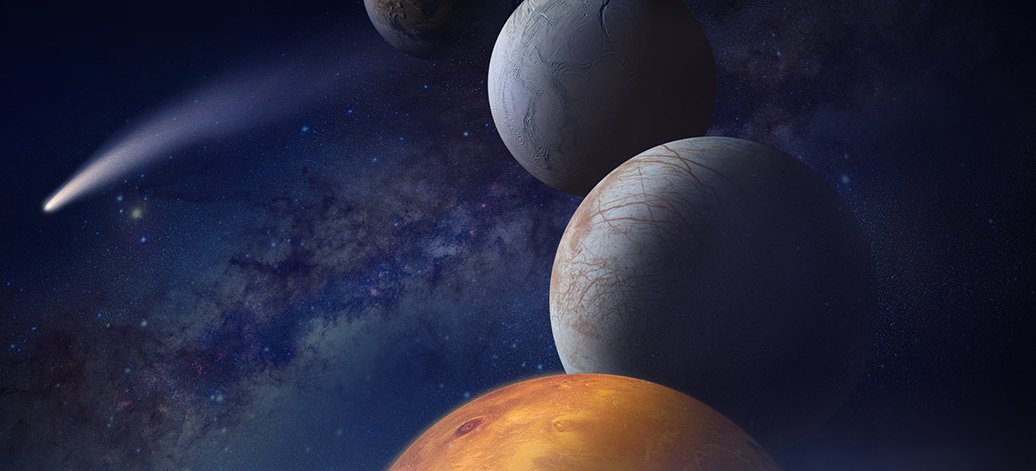Astrobiology research sponsored by NASA focuses on three basic questions: How does life begin and evolve? Does life exist elsewhere in the Universe? How do we search for life in the Universe? Over the past 50 years, astrobiologists have uncovered a myriad of clues to answering these Big Questions.
Since the astrobiology community published its last Astrobiology Roadmap in 2008, research in the field has focused more and more on the link between the “astro” and the “bio” in astrobiology—that is, what makes a planetary body habitable. “Habitability” has become a major buzzword in astrobiology as researchers have learned more about extraterrestrial environments in our Solar System and beyond and deepened their understanding of how and when the early Earth became habitable.
Why is Earth habitable? How, when, and why did it become habitable? Are, or were, any other bodies in our Solar System habitable? Might planets orbiting other stars be habitable? What sorts of stars are most likely to have habitable planets? These are just a few of the questions that astrobiologists are trying to answer today.
In preparing this new science strategy, hundreds of members of the astrobiology community collaborated in an intensive process of defining goals and objectives for astrobiology research moving forward. The community identified six major topics of research in the field today:
- Identifying abiotic sources of organic compounds
- Synthesis and function of macromolecules in the origin of life
- Early life and increasing complexity
- Co-evolution of life and the physical environment
- Identifying, exploring, and characterizing environments for habitability and biosignatures
- Constructing habitable worlds
This 2015 Astrobiology Strategy identifies questions to guide and inspire astrobiology research on each of these topics—in the lab, in the field, and in experiments flown on planetary science missions—over the next decade. The strategy also identifies major ongoing challenges that astrobiologists tackle as they attempt to answer these universal questions.
You can download the 2015 Astrobiology Strategy here.

